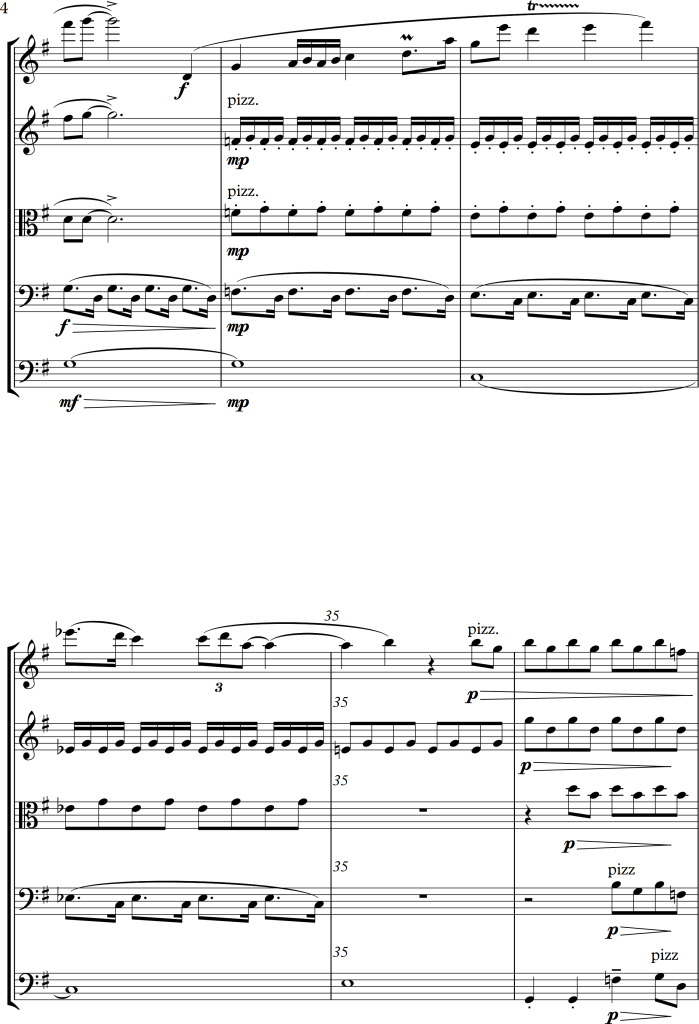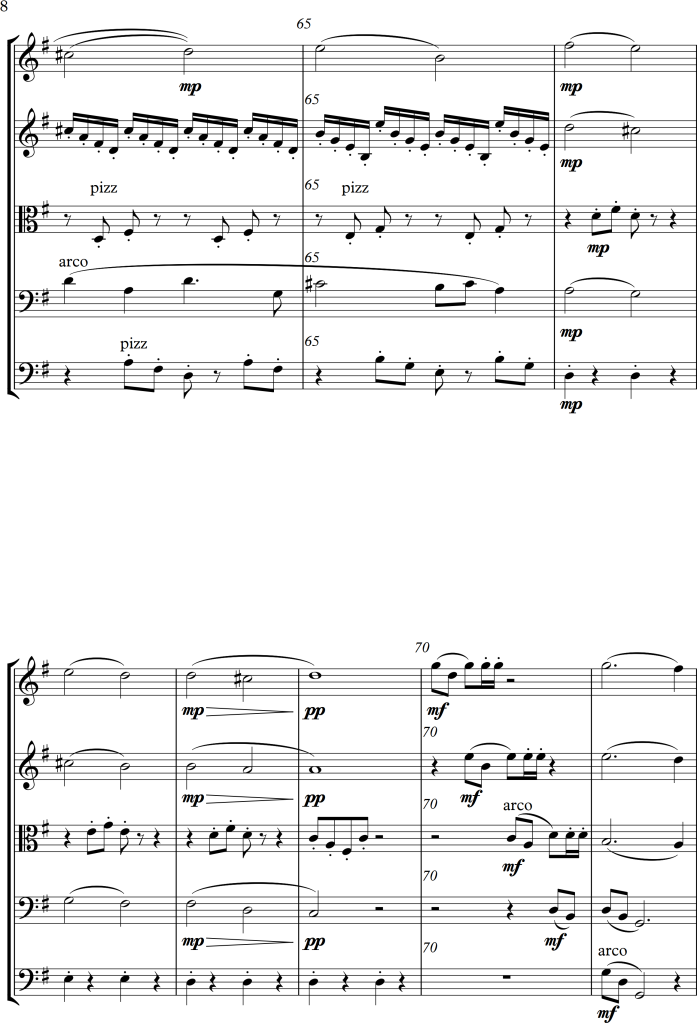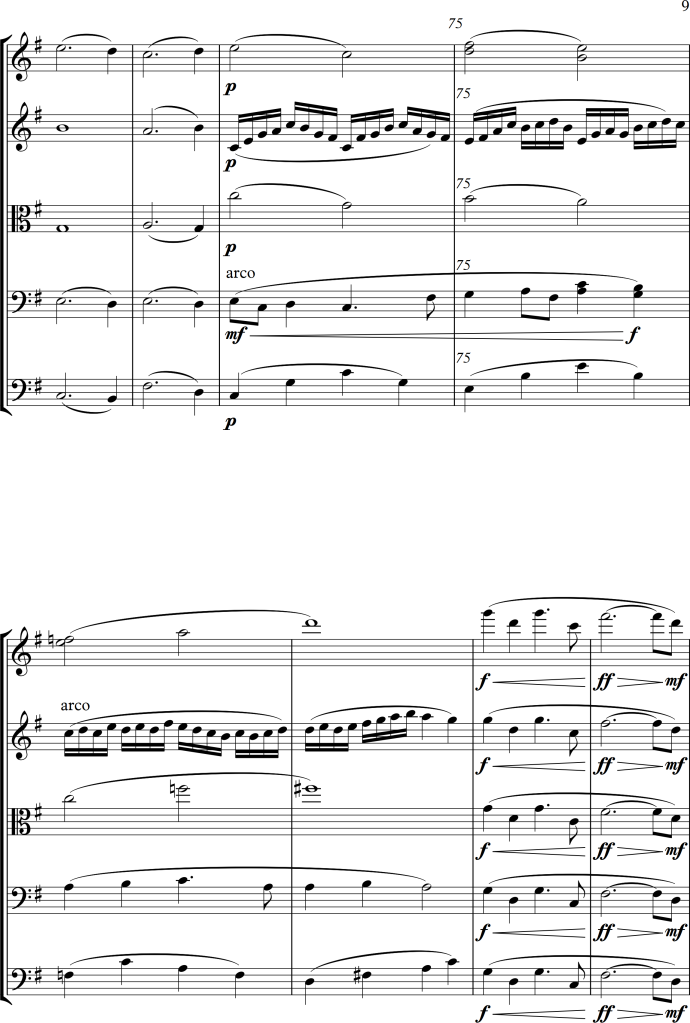For this Assignment I was asked to write a short piece for strings which are adapted to a short “aerial filming” passing over a landscape including woodlands, grazing animals and ending on the open sea.
The suggested length was between 2 or 3 minutes, nonetheless, as I wanted to reuse and develop some thematic ideas it ended up being slightly longer. As a base for this piece I used a simple theme consisting of 6 notes, which can often be found through its rhythmic pattern. I tried to include and develop the theme several times. In bar 37 I moved to the subdominant C for a few bars, which I later led to D, and eventually moved back to the tonic G. Overall I really enjoyed writing this piece, even though it ended up being longer than expected.
Furthermore I need to mention, that it was part of the Assignment to write a short-score beforehand and develop it for a set of string instruments. Even though I tried to pre – write a short score I found it much easier to write for the finished layout of the score. I already noticed in previous course – units that it is easier to use a shortscore for several ensembles, nonetheless I somehow found it really difficult to use one for this piece – even though I tried several times, I always ended up creating themes which ended after a few bars and I didn’t know how to develop them any further.










Learning Outcomes:
- Manipulate harmonic progressions to suit your own taste
At this point the Assignment itself seems rather suitable – this is probably the first piece I wrote throughout the whole course, where I was more daring in terms of harmonic progression. Within my previous pieces I mostly just moved to the related minor/major key of the tonic, whereas I managed to progress over several keys within this piece. Interestingly, this was mainly caused by the given task of “describing” a landscape, which’s description seemed bright and calming. Thus, I didn’t want to create too much tension and mainly stick to a major key.
- Compose accompaniments for songs and show you understand the requirements of
word-setting
As this part of the course was almost purely instrumental, I couldn’t find a project which directly relates to this point. Nonetheless, one of the Listening Log entries I made “Dido’s Lament” had a lovely sounding leading voice, which adapted well to the accompanying orchestra instead of working against it The voice almost seemed like a instrument of the orchestra as well, which is something I consider using for future compositions myself.
- Write more confidently for string and brass instruments
Here I want to refer to project 9 A guitar prelude, as this was my first piece that I wrote for solo – guitar I was slightly hesitant about the technical boundaries, and whether the presentation of the score was appropriate. From all the pieces I wrote over this part of the course, this was probably the most challenging one and I am planning on having a further, more thorough look into writing music for solo – guitars.
- Demonstrate the ability to work within some contemporary styles, and compose for
specific commercial and media needs
The task for project 10 – portraying a person through music really inspired me to develop specific thematically ideas which can be associated with people, animals or objects. As mentioned in the comment above the piece “For Rosa”, I am working on a “code” which uses all letters of the alphabet and transitions them into specific notes. With this piece, I unfortunately didn’t dare to write something in this style as I wanted to portrait the person with the character of the music in general, not just single notes.
- Write a critical review on a composer or compositional technique
Here I want to mention the very last exercise of the course unit, where I was asked to do some research about the serenade. This exercise was rather challenging, as I mostly stumbled upon the serenade from the classical era, which seemingly had a clearer layout than the serenades from the later epochs. Nonetheless, it was still interesting to see where this form of composition had its beginnings and especially how it developed from being a piece for small ensembles meant to be played outdoors to its way in concert halls with a much wider orchestral range.